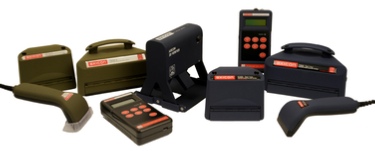

Tel: (630) 235 6077
Email: jn@codemasterllc.com




1. Honeywell (PSC/HHP) QuickCheck 8XX portable verifiers with the gun-
Axicon 6015, 66515 and 7015 verifiers are fully ANSI/ISO compliant and test all 7 parameters, plus 2 additional critical attributes.
2. Using a wand makes the Honeywell QuickCheck 8XX portable ANSI/ISO compliant.
Axicon 6015, 66515 and 7015 verifiers do not require optional wand to be ANSI/ISO compliant—they are compliant by design. The optional wands for the QuickCheck are single aperture devices—you need a 6 mil wand to test UPC, a 10 mil wand to test Code 128, GS1-
3. QuickCheck 8XX portables are designed to use NiCAD batteries which, due to lead content, are no longer available.
Axicon 6015, 6515 and 7015 verifiers are USB tethered to the user’s PC (or Mac) and derive power from the host computer. There are no onboard batteries. The available PV1000 Portable Display Unit (PDU) comes with eco-
4. QuickCheck 8XX portables can test a wide variety of barcodes, from the very smallest to the largest symbols.
Axicon linear verifiers are used in direct contact with the bar code. This is stipulated by the ANSI/ISO specification and ensures the correct scanning angle, and also prevents any influence from ambient light, ensuring an accurate and repeatable test. Axicon offers linear verifiers with a range of scan widths to test symbols of various sizes.
5. QuickCheck 8XXportables can transfer saved verification reports to an optional printer or to a PC.
Honeywell offered two optional, proprietary printers (discontinued): a dot matrix printer using an ink ribbon or a slightly faster thermal printer. Transferring saved reports to a host PC required an optional (discontinued) 9 pin serial interface cable. Most laptop computers do not have a 9 pin serial connector.
Axicon’s USB tethered verifiers do not require an optional printer—the verification report is displayed directly on the host PC’s display where they can be easily printed, saved or emailed. Verification reports are easily transferred to a PC (or Mac) from the PV1000 PDU with any USB flash drive, or printed on any 110V wall current or portable serial printer.